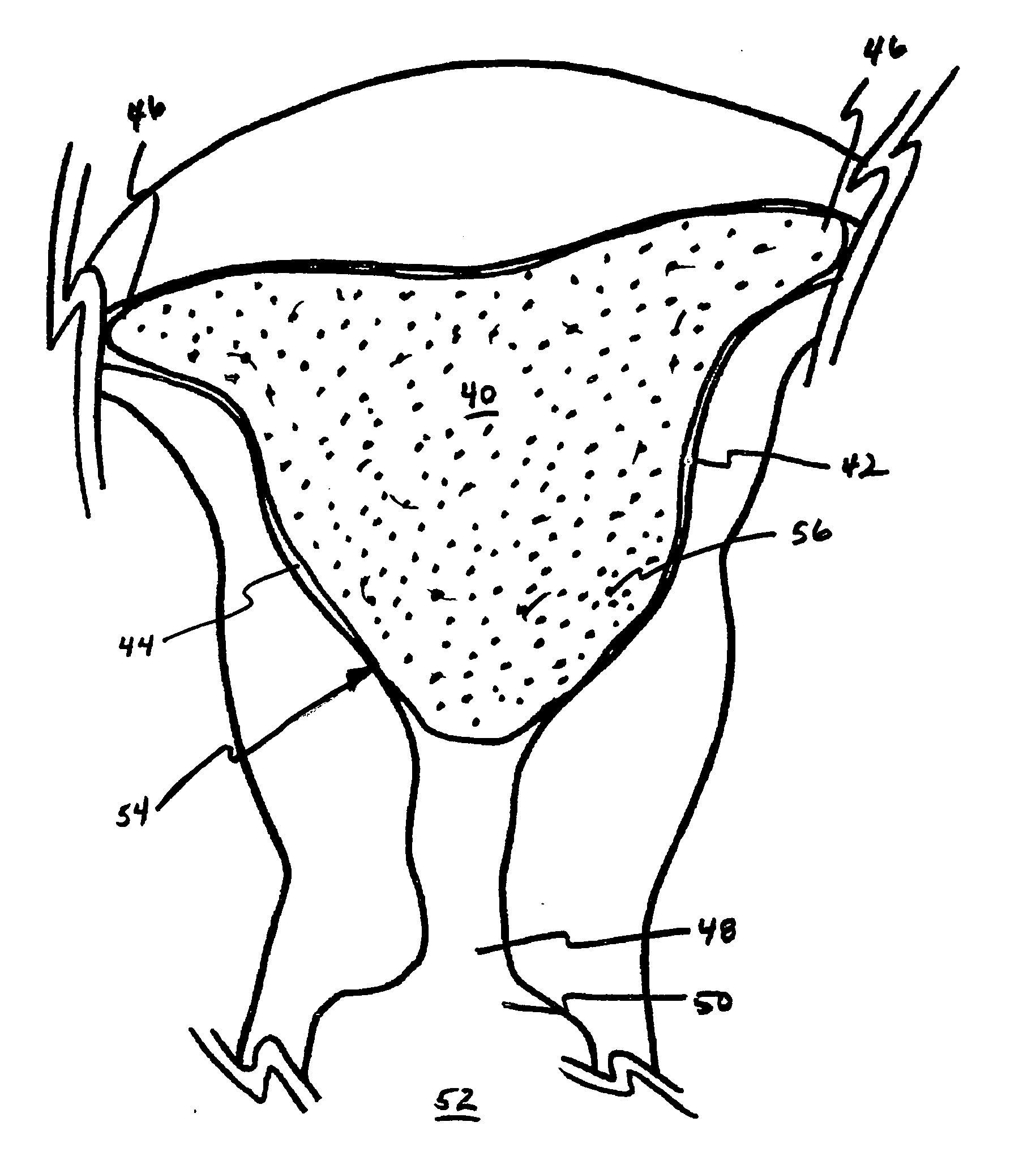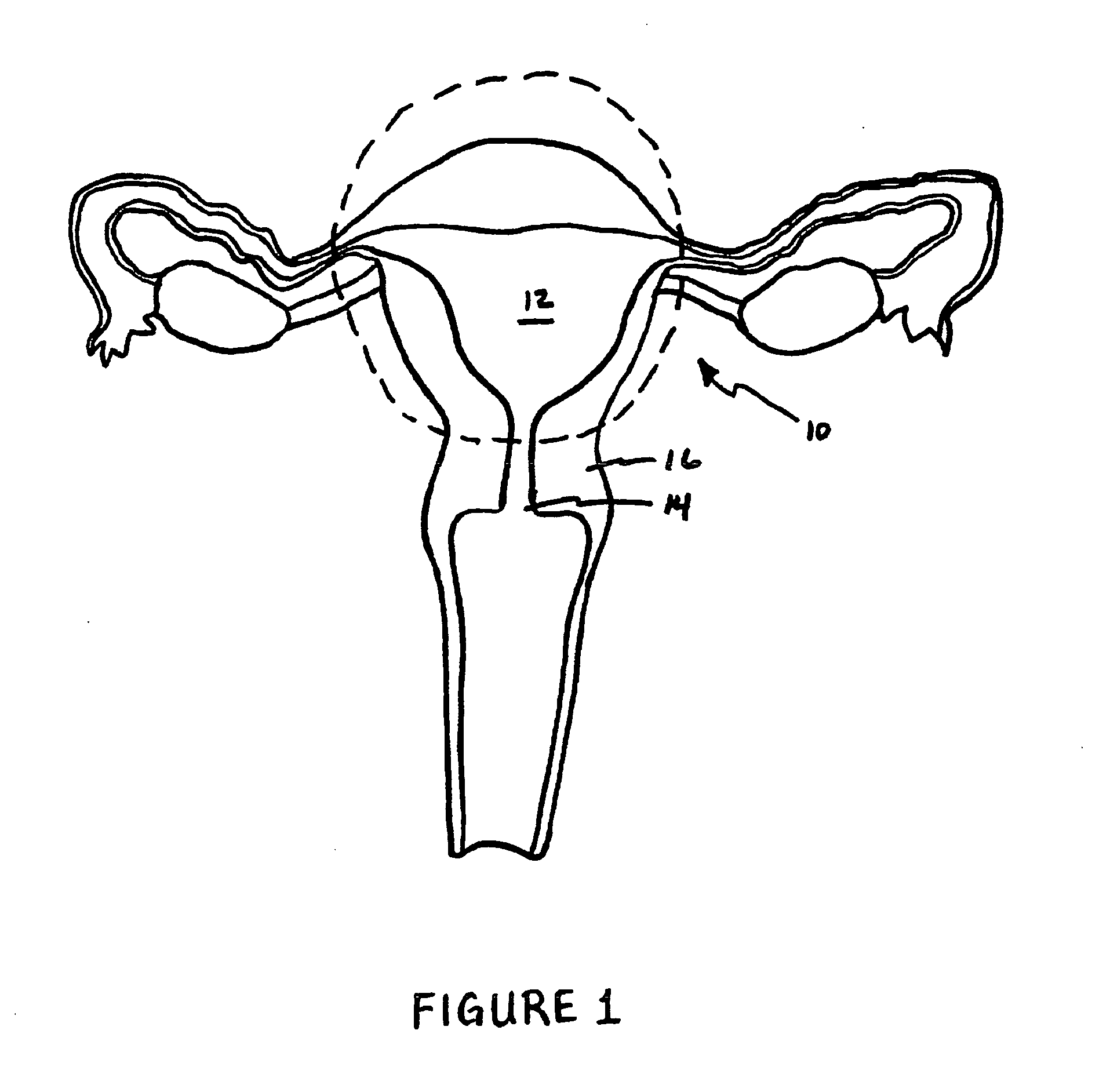Intrauterine implant and methods of use
a technology of intrauterine implants and uterine arteries, applied in the field of intrauterine implants and methods of use, can solve the problems of affecting the function of the body, affecting the quality of life of the patient, so as to promote effective fibrosis or scar tissue formation and control bleeding
- Summary
- Abstract
- Description
- Claims
- Application Information
AI Technical Summary
Benefits of technology
Problems solved by technology
Method used
Image
Examples
Embodiment Construction
[0030] Referring to FIG. 4, an embodiment of the intrauterine implant device 40 in accordance with the present invention is shown deployed within a uterus 42. Although the invention as disclosed herein generally refers to a uterus, other body cavities, such as the endocervical canal, the lower uterine segment and cavities within a heart, abdomen or other similar cavities, are also included within the scope of the present invention.
[0031] The uterus 42, or womb, is part of the female internal genitals. The uterus 42 is a hollow, muscular organ approximately four inches long and three inches wide and is generally shaped like an upside-down pear. It should be noted that the uterus 42 depicted in FIG. 4 is in a distended state to clearly show the uterine cavity 44. However, it is understood that the uterine cavity 44 is normally in a collapsed state, as shown in FIGS. 5A and 5B.
[0032] Two openings 46 located at the upper end of the uterus 42 lead to the Fallopian tubes that are connec...
PUM
 Login to View More
Login to View More Abstract
Description
Claims
Application Information
 Login to View More
Login to View More - R&D
- Intellectual Property
- Life Sciences
- Materials
- Tech Scout
- Unparalleled Data Quality
- Higher Quality Content
- 60% Fewer Hallucinations
Browse by: Latest US Patents, China's latest patents, Technical Efficacy Thesaurus, Application Domain, Technology Topic, Popular Technical Reports.
© 2025 PatSnap. All rights reserved.Legal|Privacy policy|Modern Slavery Act Transparency Statement|Sitemap|About US| Contact US: help@patsnap.com



